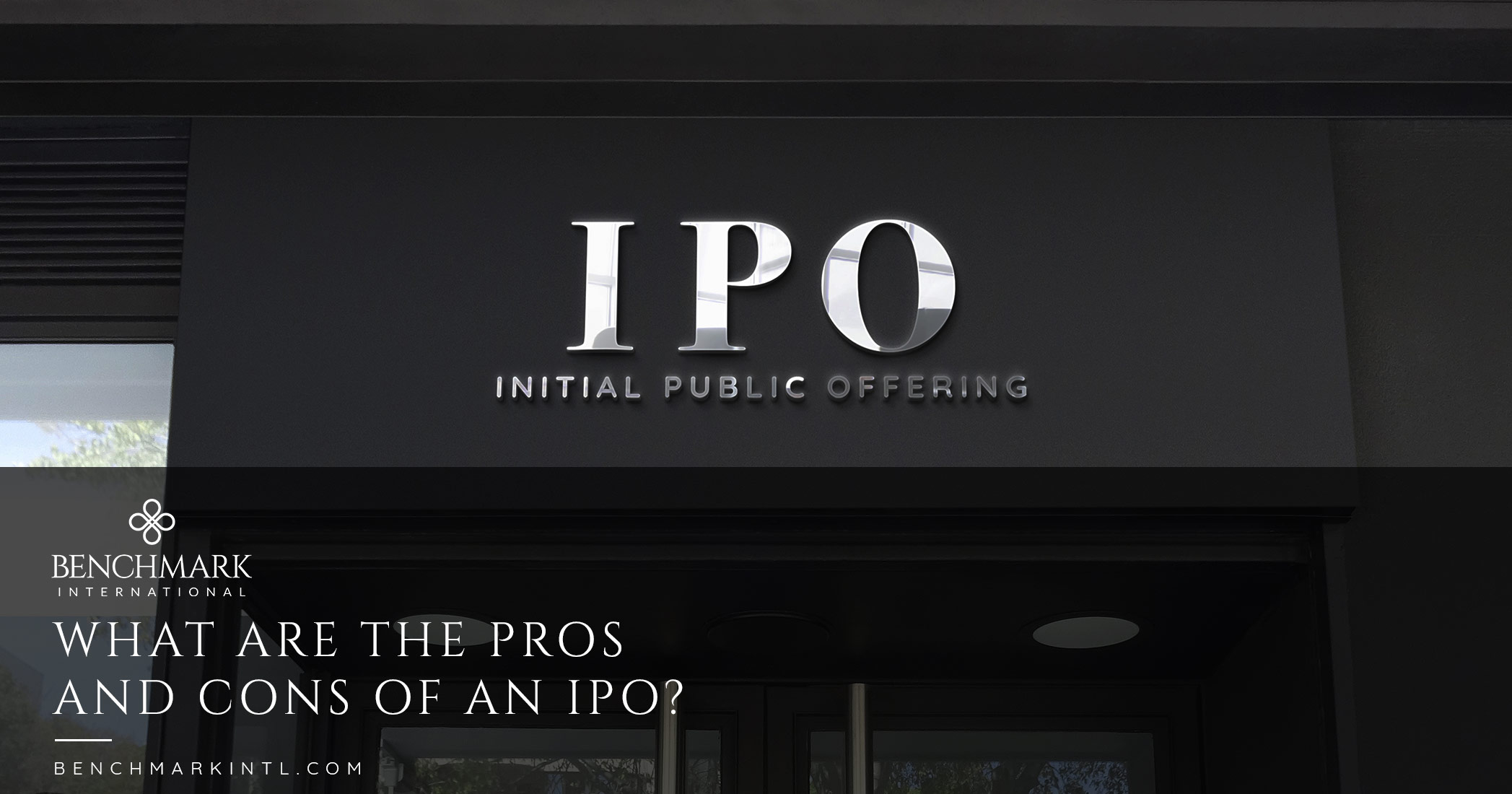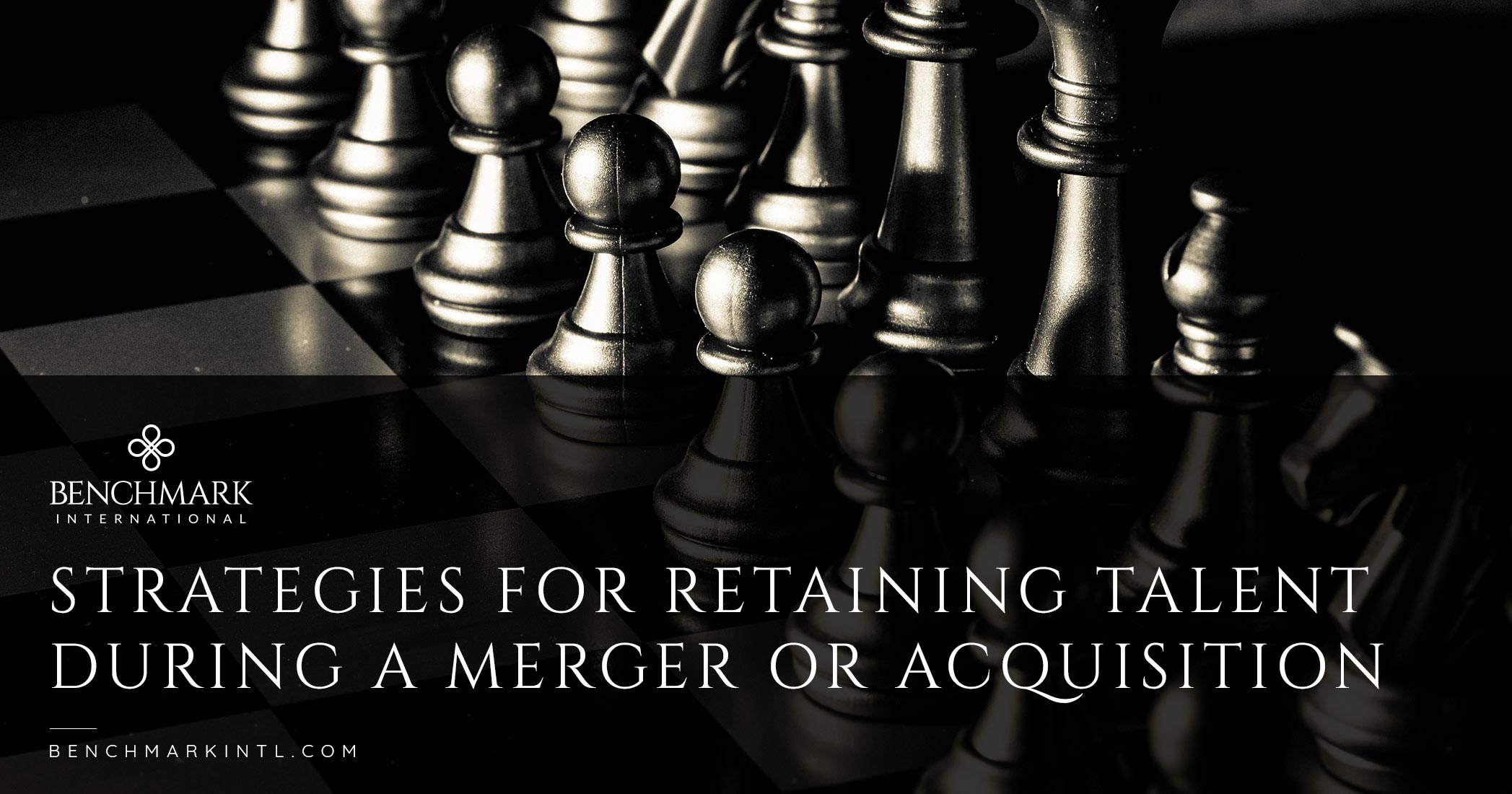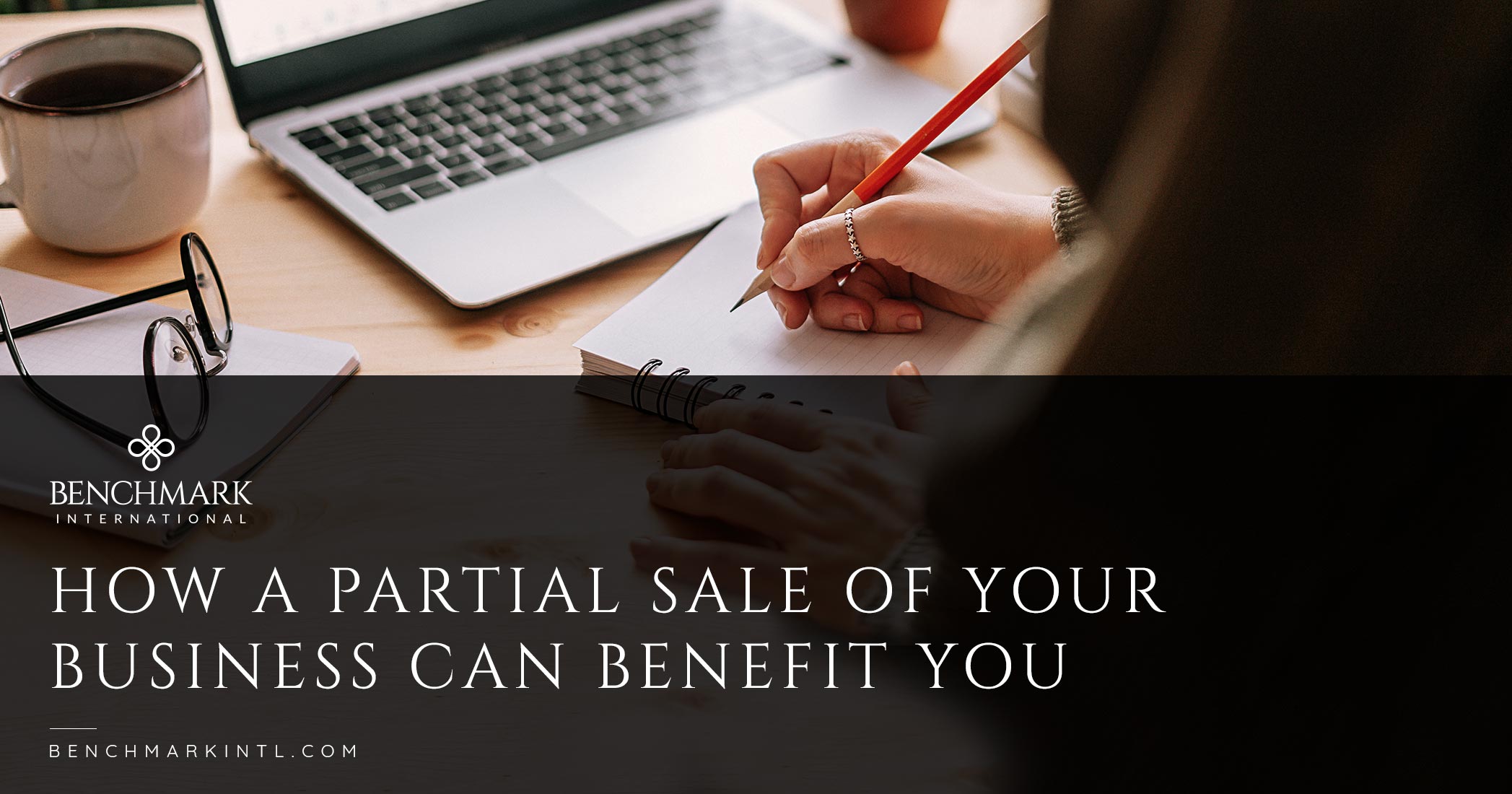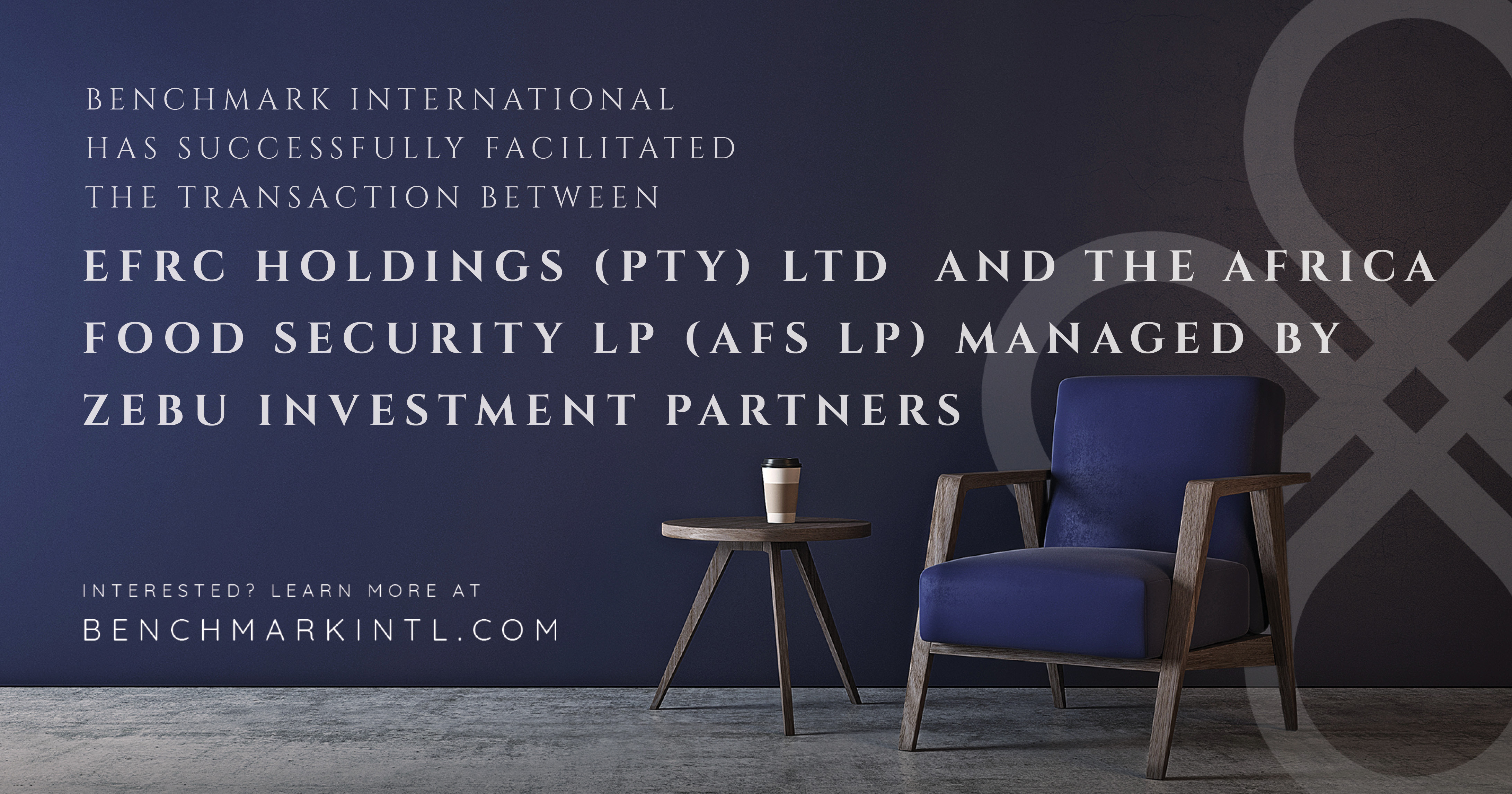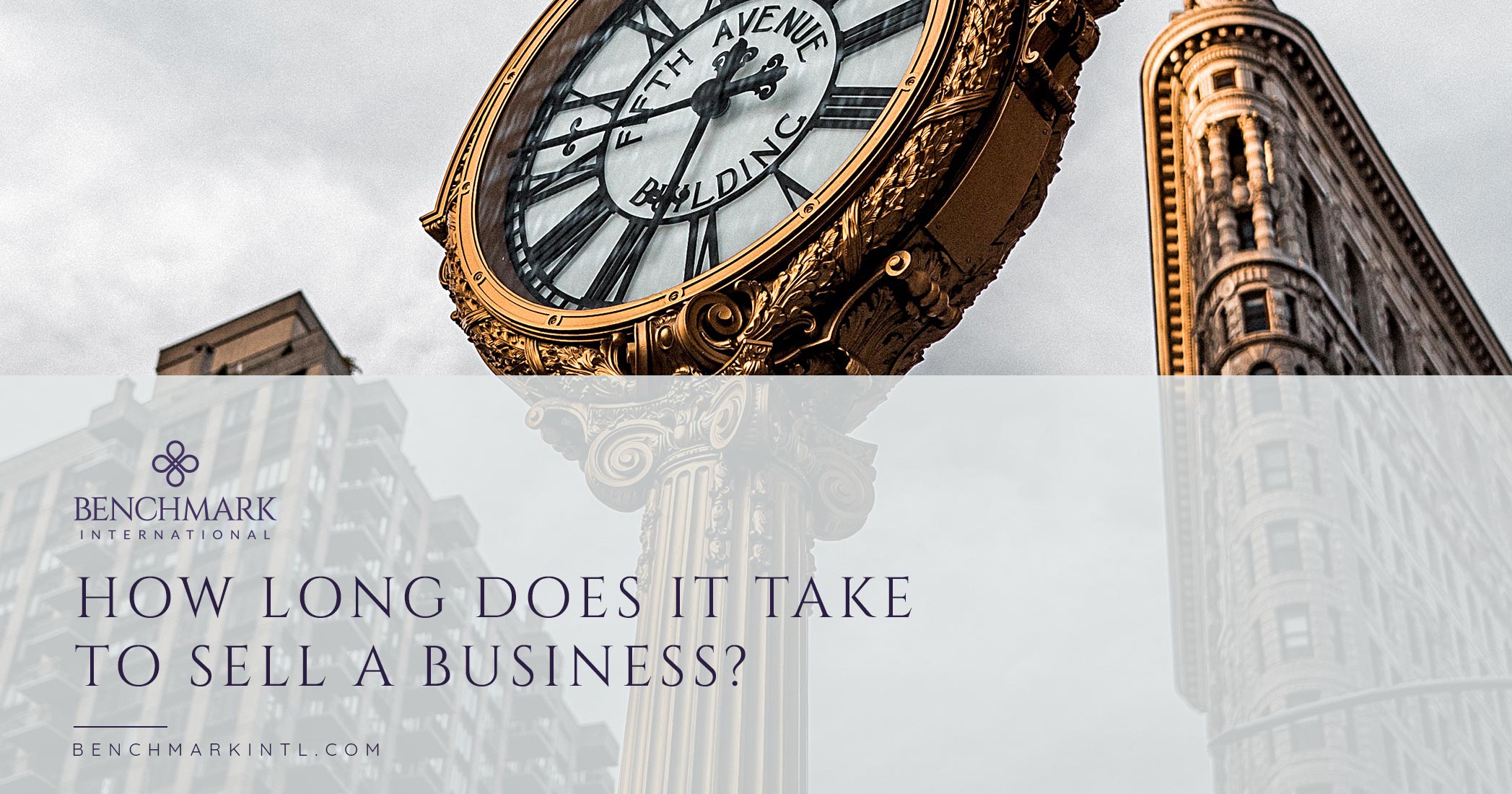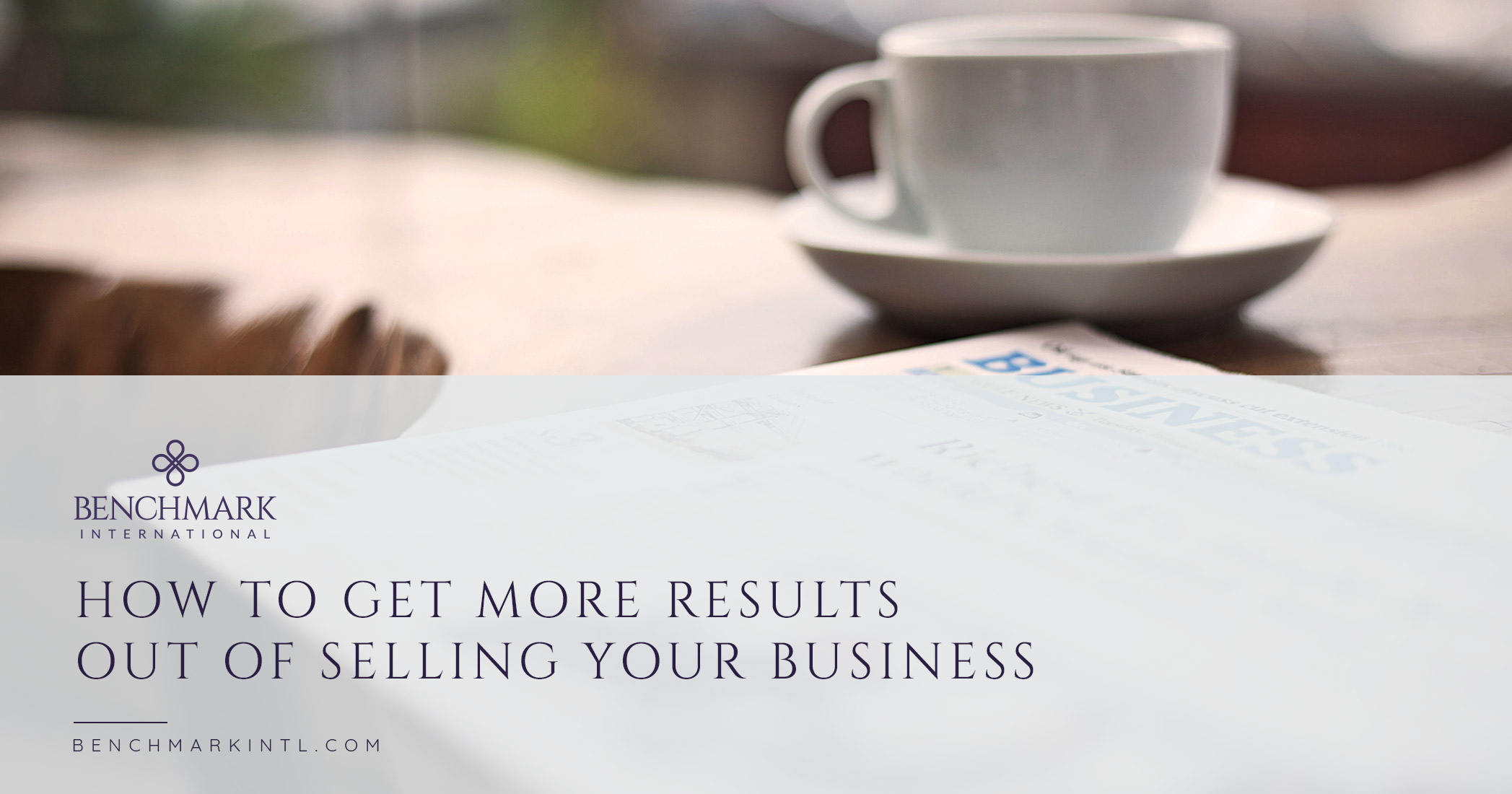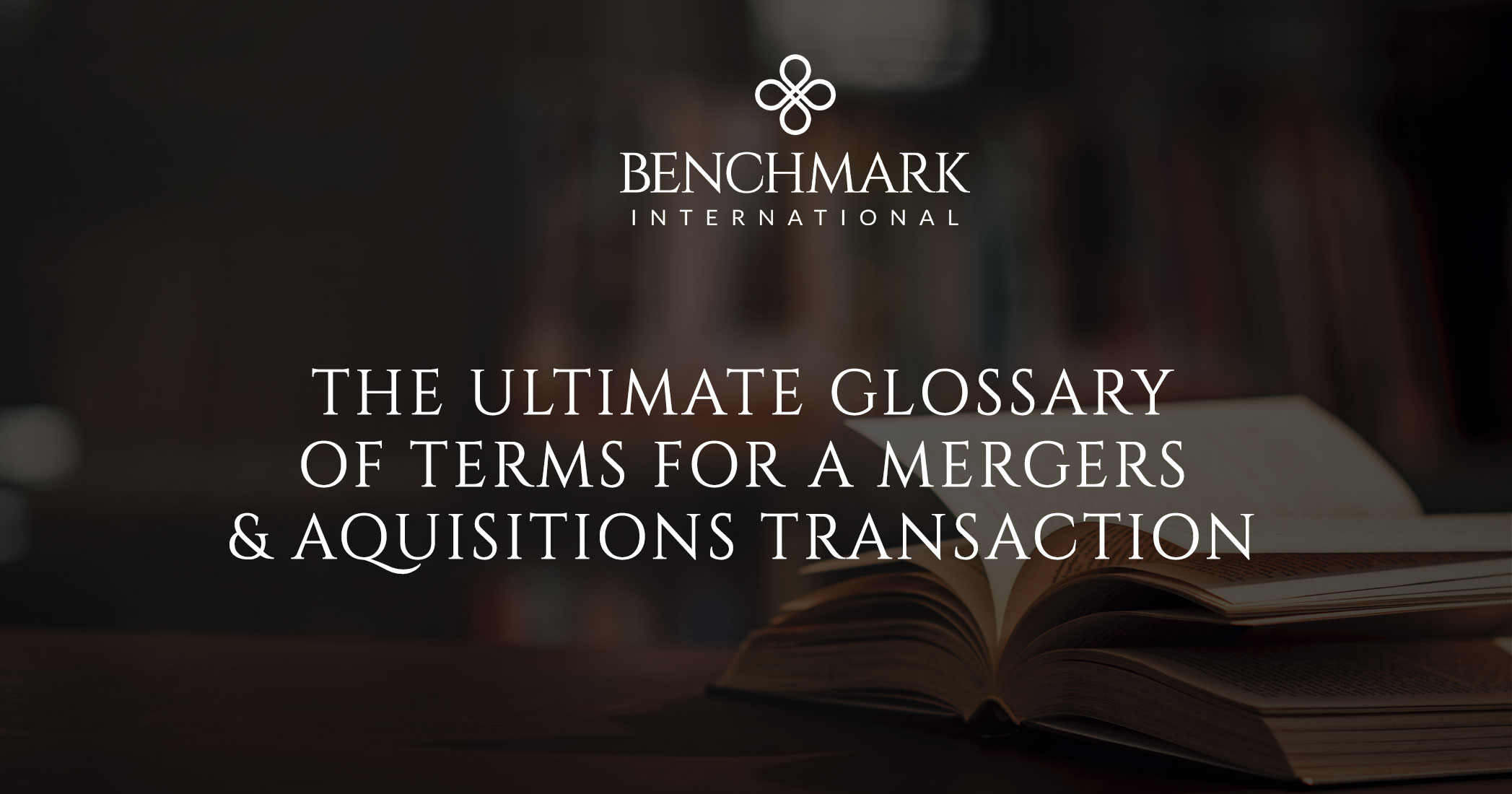Owner’s compensation is a key feature that is addressed in various ways in a CIM. Some variables affect how owner’s compensation is treated in a CIM. Some of these variables include how much salary the owner is receiving, the role of the owner in the business currently, and the owner's role following a transaction. Combining these variables will determine how owner’s compensation is addressed in the CIM. A key point that must be known is that distributions do not affect adjustments to owner’s compensation. Distributions do not affect the income statement of the business, so they are not to be considered when making adjustments for owner’s compensation adjustments.
Archives
How Is An Owner’s Compensation Treated In A CIM?
What Are The Pros And Cons Of An IPO?
An IPO is an initial public offering (IPO), which is the first limited public stock sale by a private company. IPOs are a strategy often used by smaller businesses to raise capital from public investors in order to facilitate expansion and growth. Once public, the company can be traded on the open market. There are both upsides and downsides to taking a company public.
READ MORE >>Share this:
Seller Handover In A Business Sale
Handover Process
After completing the sale of your business, there is typically a handover process between the seller and the buyer. One of a buyer’s most significant concerns when taking over a business is that the company’s performance continues as it was before the sale. When a seller is willing to stay on for a handover process post-closing, the buyer has increased trust in the business, resulting in the business selling more quickly and at a higher valuation. Therefore, it will be beneficial to both parties to plan this part of the process well and in advance of the time that the handover will take place. The length, compensation, etc., of the Handover period will be worked through during the Purchase Agreement negotiations. If there is a failure to recognize and offer an acceptable handover period for the business, it could cause a deal to fall apart while it is in due diligence.
Stages Of A Business Handover
The typical stages of a business handover are the Training Stage, Handover Stage, and Assistance Stage. Immediately following the sale, the seller will usually continue to run 100% of the business. During this time, the new owner will take some time to familiarize themselves with the business. Then, as the Training stage begins, the seller will slowly reduce their involvement while the buyer continues to increase theirs. In the Training stage, the seller must create a checklist of items that he can run through with the new owner. Mark each item as complete once it’s finished, and keep this for your records if you run into any issues down the road. It is a good idea to observe how a day in the life of your business typically goes. Take note of every payroll task you complete, every person you communicate with, any supplier or contractor documentation, provide copies of all budgets, information about cash flow, etc. Continue with this process until you feel that you have been able to document all of the particulars that the new owner will need to know in order to keep the business operating smoothly. As the seller trains the new owner, the seller will slowly start to reduce their involvement while the buyer continues to increase theirs. This sequence will continue until the complete handover is achieved.
During the Handover stage, the new owner runs 75%-100% of the business with the seller still on hand to help answer questions and ensure that processes are running smoothly. If you have had a successful Training stage, the new owner will have increased confidence in successfully running the business. This may matter to the seller as well, particularly if there are any deferred payments or earnouts that have been agreed to in the structure of the sale. It is imperative to train the buyer and put them in a position to be successful, as both parties benefit from doing so. The new owner will now be in charge of making crucial decisions and bringing innovative ideas and future plans for the business to the table. Customer and employee relationships with the new owner should be solidly in place at this point, and the seller should have very limited involvement in the day-to-day activities of the business.
Once the new owner is running 100% of the business, it is common to enter the Assistance stage, where both parties have made an agreement to remain in contact for a set period of time in case there are any questions that come up. While the seller is no longer directly engaged with the daily runnings of the company, it is best for them to make themselves available to answer any questions that the new owner might have. Many times the majority of this communication can be handled through email and phone conversations. An essential item to have established for this stage is the amount of time the new owner can expect to receive help from the seller, paying particular care to have the expectations and limitations outlined.
A properly planned Handover period can help the seller and the new owner is mentally prepared for the seller’s exit and help prepare the business, customers, and employees for the handover. Once the handover is complete and the seller exits fully, they can know that the business is in good hands. It is time for them to recover from and reflect on the ownership handover period and identify their next goal to get excited about.
Author
Amy Alonso
Transaction Director
Benchmark International
T: 512 861 3301
E: Alonso@benchmarkintl.com
READ MORE >>
Share this:
2022 Fintech Industry Report
The global fintech market was valued at $6.5 trillion in 2021 and is estimated to grow at a compound annual growth rate (CAGR) of 13.9% between 2022 and 2028 to reach $16.65 trillion.
READ MORE >>Share this:
Applying EBITDA Multiples To Your Company Valuation
If you are considering selling your business, you undoubtedly need to understand its value. Unfortunately, arriving at that answer can entail many different methodologies, and it often involves the familiar valuation formula of applying a multiple of Earnings Before Interest, Tax, Depreciation, and Amortization (EBITDA).
For example, if a company boasts EBITDA of $1 million, and a five times EBITDA multiple is applied, the company’s estimated value is $5 million. But how do we know what multiple applies to your business? And how do we know if the EBITDA number is even accurate? After all, EBITDA will not be the same for every business.
Share this:
You Haven’t Missed Out On The Ideal Seller’s Market
2021 was a strong market for business owners looking to sell their companies. The market remains ideal and will do so as we move into the first quarter of 2022. As we are in the middle of this year, there is no better time to consider putting your business on the market.
2021 Recap
M&A activity was moving at a record pace in 2021, thanks to economic recovery, a strong stock market, low-interest rates, rapid digitalization, more SPACs, confident boardrooms, and available debt. The U.S. had reported more than $2 trillion in M&A activity in 2021, with the year on pace to be the most active in history. Not to mention that the second quarter of 2021 was the third straight, with total global M&A value surpassing $1 trillion. That is the first time this has ever happened in three consecutive quarters. So even in the middle of the year, when things typically slow down, we are still seeing a great deal of investment, and the market is still flooded with capital.
Share this:
What’s The Difference Between Recurring And Repeat Revenue?
If you are considering selling your business, you will need to have a clear understanding of its type of customer revenue because it can significantly impact the value of your business. Sometimes people confuse recurring revenue with repeat revenue, but it is essential to understand how they are not the same thing.
Recurring Revenue
Recurring revenue stems from a contractually bound legal agreement for a solution delivered over time. It is usually contractual over one or multiple years, and because it may carry penalties or fees if the customer leaves, it can be counted on into the future. This makes it highly valued by prospective acquirers because of its predictability and lower risk.
However, recurring revenue does not have to be contractual to be valuable. Depending on the business and the services offered, it can be too costly or too much of a hassle for a customer to leave or switch providers. An excellent example of this is customer relationship marketing companies that collect large amounts of valued data over time, making it more beneficial for clients to stick with their services. Below is a list of the different types of recurring revenue.
Share this:
The New Reality and What it Means for Valuation
Is the bull market for privately held companies over? No, that’s not (yet) the reality. But one of the hallmarks of the glorious decade for selling businesses is no more. And unfortunately, many of the acquirers’ gatekeepers weren’t around the last time there was a bull market that looked like this one.
So what is this new normal? Let’s first look at the old normal that we enjoyed from 2010 to 2019 - a nice, slow, smooth macroeconomic recovery. The normalcy of the “teens” allowed small and medium businesses to grow smoothly under ideal conditions. As a result, many businesses experienced near-constant year-over-year growth. And when they’ve failed to do so (or failed to do better), the reasons for the deviation could almost always legitimately be traced directly to some internal event; perhaps the loss of a key salesperson, the launch of a bad enhancement, the lack of ability to pass on an increase in inputs to the customer, or the inability to keep up with a specific competitor.
READ MORE >>Share this:
How to Avoid Seller's Remorse
Selling your business can be an emotional experience. You certainly don’t want to be left at the end of the process with a sinking feeling that you have made a bad deal or sold to a buyer who doesn’t appreciate the value and legacy of the company you have built. However, there are things that you can do to avoid seller’s remorse; we will discuss several of them in this article for you to consider.
It’s best to begin putting together an exit plan sooner rather than later. Preparing well for the transition of a business requires time, action, and significant attention. For many business owners, their business represents the majority of their wealth. Planning for the transition allows you to have enough time to minimize taxes, prepare financially for a living situation without the income from the business and put a plan together for the next phase of life. Although typically, entrepreneurs are not the retiring type, knowing what your next move will be can be very important for your state of mind post-sale. Seller’s remorse can often be avoided by beginning to plan for the transaction three to five years before the business owner wants to exit.
Share this:
Dispelling Myths about Private Equity Buyers
We have all heard the horror stories from lower middle market business owners. Private Equity buyers will come in and get rid of all of my employees, borrow an absurd amount of money to finance the acquisition, thereby straining my company’s balance sheet and income statement, and then, light a match Goodfellas-style when they are done extracting value from it. But, I’ll let you in on a little secret? The days of financially engineering a path to outsized profits are long gone. While there certainly was an era where Private Equity funds looked to lock in a guaranteed “win” by over-levering the balance sheet, stripping the Income Statement of “fat”- read, people- and quickly flipping to monetize the win, those days are largely behind us. Today, most professional buyers value the team in place more so than any perceived competitive advantage with the product or service offering. I’ll say that again, buyers often view the team as the most important determinant of success- more so even than the core product or service offered by the business.
READ MORE >>Share this:
Strategies for Retaining Talent During a Merger or Acquisition
Mergers and acquisitions are effective solutions for growing a company, getting a competitive edge, accessing new resources, lowering risk, tapping into new markets, and acquiring key talent. Obviously, these are all very appealing to investors and upper management. But employees do not always see it this way.
In actuality, employees often view such a major change as a threat. These negative feelings can lead to employee retention problems, especially in today’s world where labor shortages are already a significant problem. Staff members may feel uncertain about the future of the company, how secure their job may be, how the culture will change, and how a change in leadership will impact them. They can also have their concerns worsened or blown out of proportion if there is not a clear line of communication about what is happening with the company during a transition. Sometimes employees will feel a sense of betrayal. Furthermore, some team members may feel guilty if they keep their jobs while coworkers are victims of downsizing or restructuring. Combine all these factors and quickly end up with people looking for work elsewhere. But that is not good for any deal. Why?
READ MORE >>Share this:
Seller Protection With an Earnout
Earnout Agreements have become increasingly routine in deal structures over the last several years as they are most widely used during times of political and/or economic uncertainty. The earnout payment is additional compensation paid in the future to the seller after the business is sold. An earnout agreement can help bridge a valuation gap or encourage the former owner to remain for a longer period of time following the close of the sale. They should only be considered when the company will continue to operate the same in the years following the sale at the time of closing. While sellers can sometimes be nervous when it comes to agreeing to an earnout, there are protections for yourself that you can keep in mind.
When structuring the earnout, it is important to consider the financial metrics used and choose your benchmark carefully. For example, buyers will often prefer to use an EBITDA target as they believe this will be the most dependable indicator of the business's profitability. On the other hand, typically, sellers do not like using EBITDA due to concerns that the buyer can manipulate the number to benefit the buyer at the end of the earnout period. While sellers usually prefer a marker based on the business's gross revenues, gross profit can sometimes be used as a good compromise for both parties. Suppose an EBITDA calculation must be agreed to move forward with the deal. In that case, the seller can ask for various expenses, overhead costs, etc., to be excluded from the calculation.
Share this:
Why Should I Sell My Company?
As the owner of a business, you face a slew of tough decisions nearly every day. One question you may have asked yourself is whether you should sell your company. Several factors can influence your decision to sell, some of which you may not have even thought about. Here you will find a comprehensive list of possible reasons to help you decide if and when selling your business is right for you.
It's at a High Point
Over time, most businesses face different cycles of highs and lows, and potential buyers prefer to acquire companies that are thriving and have a positive future outlook. When your company is performing well, and profits are high, you can opt to sell to get the maximum value in a sale. You may not be ready to retire or move on, but if you sell at the right time, you can make the most money possible and pave the way for a more secure financial future. This can also help you avoid selling at a later date for less value, which would mean less money for your retirement.
If you are far from being ready to retire, there are ways to structure a deal to stay on with the company, working for the new owner and helping them grow the business. This can help you start the transition to your full exit. And in this case, if the business declines or an economic recession occurs, you do not face the risk of losing value because you got out at the right time.
READ MORE >>Share this:
How a Partial Sale of Your Business Can Benefit You
There are strategies available for business owners who are in need of additional capital to grow their business. The partial sale transaction has gained popularity over the last couple of years. When business owners find themselves with limited operating liquidity, they are unable to create the type of growth they desire. A partial sale can bring additional resources into the business that can set into motion long-term growth strategies, increase operational stability and recruit new hires. If you are looking to downsize your company, you can invest that money into different opportunities that may offer you a higher return on your investment.
A partial sale of your business gives you the opportunity to remain involved in the business that you have spent decades building. Following a partial sale, many business owners serve as advisors, senior executives, board members, etc., to assist the buyer with their transition period to new ownership. Smart buyers are open to customizing the role and involvement of the seller once the deal has closed in order that the seller remains with the business for months and years to come.
Share this:
The Shift From a Seller's Market To a Buyer's Market When Interest Rates Rise
So if you are a business owner considering selling your company, the good news is that right now, it's a seller's M&A market. By October of 2021, total M&A deal activity reached $4.4 trillion, which is an increase of 92% compared to a year ago and is the strongest opening period for M&A since 1980. In addition, merger activity resulted in deals totaling $1.52 trillion in the three months prior to September 27, 2021. That's up 38% from the same quarter in 2020—and more than any other quarter on record.
In a seller's market, demand is high for assets that are in limited supply, giving sellers more pricing and negotiating power. This demand can be attributed to a recovering economy, high cash balances, big government spending, new SPAC buyers, and low-interest rates. Plus, investors are flush with cash and ready to spend it on acquisitions that can help create growth or add capabilities. When market conditions shift, buyers have the upper hand in deal negotiations. And this could happen when the U.S. Federal Reserve increases interest rates in the next year or so.
Share this:
The Impact of Labor Shortages on M&A
The Labor Shortage Persists
The COVID-19 pandemic has impacted companies of all sizes, but small businesses have certainly been hit the hardest. First, there were total shutdowns, followed by financing problems due to slowed business, and now it is labor shortages that are the latest issue as the world works towards recovery.
The slew of workers leaving the workforce altogether is fueling a growing labor shortage in what seems to be every industry. Demand is up, and supply is down. Businesses are facing concerns with not having enough people to get the job done—especially in sectors such as healthcare and technology. These spaces are seeing attrition rates of 3.6% and 4.5% higher, respectively, than last year. Research even shows that 36% of workers who quit their jobs did so without another job lined up.
And the labor shortage is an issue that is happening on a global scale, from the US to Canada to Europe. According to the US Census Bureau, many businesses struggle to retain and attract employees, and 49% of business owners say the labor shortage is affecting their business. And a Canadian study reported that 30% of Canadian business owners say the top motivating factor for pursuing an acquisition is gaining access to new talent. That number is up from 20% before the pandemic. Additionally, a recent Eurostat survey found that, in the third quarter of 2021, a worker shortage was hampering production at 83% of industrial companies in Hungary, 50% in Poland, and 44% in the Czech Republic.
READ MORE >>Share this:
Deal Structures in a Post Covid World
First off, I’m using the term “post-covid” gingerly, since, as I am writing this article, we are going through a surge of the Omicron variant. This article is intended to shed light on deal structures that we saw in 2021 and compare them to pre-covid years, as well as surmise future structures.
READ MORE >>Share this:
2022 Is a Seller's Year for M&A
2021 Was a Record Year
In 2021, dealmakers worldwide announced $5.6 trillion in M&A transactions (that’s 30% higher than the previous record), and the U.S. reported $2.9 trillion in transactions (that’s 40% higher than the previous record). While 2021 may have been a record-breaking year for middle-market M&A activity, 2022 should be an excellent year for sellers.
Last year several factors drove deal activity to new heights:
- Pent-up activity from the previous slow year because of the COVID-19 pandemic
- A wealth of capital seeking investment opportunities
- Potential tax changes this year
- Strong economic growth
- Continued low-interest rates
Share this:
2021 Was a Record Year For M&A - And 2022 Could be, Too
After the trials and tribulations of 2020, no one really knew what to expect going into 2021. Yet, for the world of M&A, it couldn’t have been a more pleasant surprise.
Last year has most certainly been a record year for M&A deals, making a huge comeback from 2020. In 2021, the number of announced deals exceeded 62,000 globally. That’s up an unprecedented 24% from 2020. Deal values reached an all-time high of $5.1 trillion.
Almost all sectors are showing signs of recovery from 2020. Values are up and multiples are rising, with strategic M&A multiples at an all-time high (a median multiple of 16x EV/EBITDA).
READ MORE >>Share this:
Benchmark International Successfully Facilitated the Transaction Between Kaleidico, LLC and a Private Individual
The seller, Kaleidico, is made up of a team of experts that create and execute lead generation strategies for businesses in the mortgage lending and legal verticals. Their disciplined creative process has been generating leads since 2005.
READ MORE >>Share this:
Benchmark International Successfully Facilitated the Transaction between EFRC Holdings (Pty) Ltd and The Africa Food Security LP (AFS LP) managed by Zebu Investment Partners
Benchmark International is pleased to announce the transaction between EFRC Holdings (Pty) Ltd (including its wholly owned subsidiaries Elgin Free Range Chickens (Pty) Ltd, Elgin Poultry Abattoir (Pty) Ltd and EFRC Agri Operations (Pty) Ltd) and The Africa Food Security LP (AFS LP) managed by Zebu Investment Partners.
READ MORE >>Share this:
Benchmark International Successfully Facilitated the Transaction Between Jormandy LLC and Security Credit Services
Benchmark International is pleased to announce the transaction between Jormandy, LLC (“Jormandy”) and Security Credit Services (“SCS”).
READ MORE >>Share this:
Benchmark International Successfully Facilitated the Transaction Between Loudon County Rentals & Mini Storage Inc. and Private Equity-Backed Rental Platform
The seller, Loudon County Rentals and Mini Storage has been the premier equipment rental destination for over 28 years in East Tennessee. Their extensive selection and dedication to providing the right tools and equipment their customers need to get the job done are above and beyond the industry standard.
READ MORE >>Share this:
Benchmark International's Client Diagnostics Research Group Was Acquired By Ima Group
On October 12, 2021, it was announced that Diagnostics Research Group (DXRG) was acquired by The IMA Group (IMA).
READ MORE >>Share this:
What To Look For When Choosing An M&A Advisor
Selling your business is a paramount moment in your life. It’s something you absolutely want to get right so that you can extract the most value out of the deal—and so that you are protected from being swindled by a savvy buyer. It also takes a great deal of time and energy to sell a company, which can be rather difficult to spare when you are trying to focus on running a business. Most people simply do not have this time, energy, connections, or expertise that is required to put their company on the market. This is where the importance of an experienced M&A advisor comes in. By partnering with an M&A expert, they handle all the details of a deal, including due diligence, negotiations, marketing, vetting, and ensuring that you get the most value for your business. They also know how to navigate bumps in the process, and manage the expectations of all parties involved.
READ MORE >>Share this:
Why 2021 Is A Seller’s Market
A Seller’s Market Versus a Buyer’s Market
In a seller's M&A market, excess demand for assets that are in limited supply gives sellers more power when it comes to pricing. Such demand can be generated and galvanized by circumstances that include a strong economy, lower interest rates, high cash balances, and solid earnings. Other factors that can instill confidence in buyers—leading to more bidders willing to pay a higher purchase price—include strong brand equity, significant market share, innovative technology, and streamlined distributions that are difficult to emulate or recreate from scratch.
READ MORE >>Share this:
Selling Your Company? Beware Of Strangers Bearing Gifts
If you are considering selling your company, you should be aware of a certain menace that could have you in its crosshairs. There are direct buyers out there who intentionally prey on business owners, attempting to acquire a company by blindsiding its owner with big promises and, more importantly, taking advantage of their lack of guidance from a seasoned M&A professional. These buyers purposely look to avoid competition for a company because competition drives valuations higher, and they want to make an acquisition on the cheap—in addition to other shady maneuvers.
Bait & Switch
Some buyers will attempt to pull “bait & switch” tactics. To initially intrigue a seller, the buyer will present a high dollar amount. As they conduct due diligence and get the target more and more committed to the deal, they begin chipping away at the value until they reach a price and terms that are far more favorable for the buyer. This is typically an exhausting process for the seller and can lead to plenty of regret. If the deal falls apart, the seller may be reluctant to restart the process with another buyer, thinking the process will just be the same. In reality, it could have been completely different for the seller if they had a reputable M&A specialist on their side from the beginning.
Share this:
M&A Expectations After The Covid-19 Pandemic
It’s no surprise that the COVID-19 pandemic slowed M&A deal activity overall in 2020. According to data from PitchBook, more than 2,000 transactions closed for a value of $336.8 billion in Q2 of last year. That represents a 41 percent decline in the number of deals from Q1. Yet, deals did pick up in the second half of the year, which is likely to continue, as businesses are poised for improved economic conditions that leave COVID-19 in the rearview mirror.
READ MORE >>Share this:
Should You Consider Cross-border M&A?
The world economy’s appetite for cross-border mergers and acquisitions continues to grow in popularity amid globalization and the emergence of new technologies. These types of global deals offer their fair share of risks and rewards. So how do you know if it’s the right strategy for your company? While there is no magical equation to answer that question, you can take the time to understand what you will be faced with in a cross-border transaction, how it may make sense for your particular business within your sector, and what precautions you will need to take.
Motivations for Cross-Border M&A
There are several different reasons that business leaders turn to cross-border deals to address their needs and benefit their companies. These objectives include:
READ MORE >>Share this:
What Is An ESOP?
An ESOP is an Employee Stock Ownership Plan under which staff members acquire interest in the company through a particular benefit plan. This type of plan is designed to incentivize employees to act in the best interest of business and stay focused on company performance since they themselves are shareholders and will want the stock to do well. A study by Rutgers found that companies grow 2.3% to 2.4% faster after setting up an ESOP.
ESOPs are established as trust funds and can be funded when companies:
- Put newly issued shares into them
- Put in cash to purchase existing company shares
- Borrow money through the entity to buy shares
If the plan borrows money, the business contributes to the plan to facilitate repayment of the loan. Contributions are tax-deductible and employees pay no tax on them until they leave or retire. If an ESOP owns 30% or more of company stock and that company is a C corporation, owners of a private company selling to an ESOP can defer taxation on gains by reinvesting in securities of other businesses. S corporations can also have ESOPs and the earnings attributable to the ESOP's ownership are not taxable.
Companies of all sizes use ESOPs, from small family-owned businesses to large publicly traded corporations. Company leadership usually offers employees stock ownership with no upfront costs. It is common for distributions from the plan to be linked to vesting, which is the proportion of shares earned per each year of service. The shares may be held in a trust for safety and growth until the employee resigns or retires—they cannot take the shares with them. If an employee is fired, they usually only qualify for the amount they have vested in the plan. Once fully vested, the business buys back the vested shares from the departing employee and the money goes to that employee in the form of either one lump sum or periodic payments. After the business buys back the shares and pays the employee, the shares are either redistributed or voided.
ESOPs offer several benefits for the ownership, the company, and its employees. Owners gain liquidity and asset diversification, they can defer capital gains taxes on proceeds, and they maintain upside potential and leadership in the company. Companies get tax deductions on sale amounts, can become income tax-free entities, and have a tool to retain and attract talent. Employees secure retirement benefits and enjoy having a real stake in the company they work for.
It should be noted that employee ownership does not mean that employees are more involved in operations or running the business. They are not entitled to receive financial or strategic information. They are given a summary plan description and annual statements for their account. In some cases, employees may be granted certain voting rights.
ESOPs and Exit Planning
ESOPs are often used in succession planning as a strategy for liquidity and transition. Around two-thirds of ESOPs provide a market for the shares of a departing owner of a profitable business. Others are used as a supplemental employee benefit plan or as a way to borrow money in a tax-favored manner. Because ESOP transactions are flexible, they enable ownership to either withdraw slowly over time or all at once. Owners may sell anywhere from one to 100% of their stock to the ESOP, allowing them to stay active in the company even after selling all or most of it.
Additionally, ESOP transactions provide more confidentiality than third-party sales. Because confidential information does not need to be shared with prospective buyers, it eliminates risk of detriment to the business. An ESOP transaction is also known to offer a greater certainty of closing versus sale to a third party, and terms of the transaction are arranged to be fair to the ESOP and its members. It is also considered to be more conducive to maintaining healthy company culture because it aligns the interests of ownership, management, and employees.
Other Types of Employee Ownership
In addition to ESOPs, companies can offer employees the following options:
- Direct-purchase programs that allow employees to buy shares of the company with their personal after-tax money.
- Stock options that offer employees the chance to purchase shares at a fixed price for a set period of time.
- Restricted stock, which gives employees the rights to acquire shares as a gift or purchase after reaching certain benchmarks.
- Phantom stock, which provides employees with cash bonuses equal to the value of certain shares based on performance.
- Stock appreciation rights that allow employees to raise the value of an assigned number of shares, which are usually paid in cash.
Let’s Talk About Your Future
If you’re ready to make a move with your company, we’re ready to make the most of the process for you. Contact one of our esteemed M&A advisors at Benchmark International and we can begin writing the next chapter of your success story.
READ MORE >>Share this:
What Is A Buy and Build Strategy?
A buy and build strategy is commonly used by private equity firms seeking to expand operations, generate value, and increase returns. It is accomplished through the acquisition of a platform company with already established internal capabilities that can be further built upon. This can include the acquisition of several smaller businesses, combining their operations to create more value. Buy and build transactions, which can be aggressive, tend to occur more often in slower economies because private equity firms become even more interested in improving returns at a time when organic growth and operational efficiencies are not enough. They are also more common in highly fragmented sectors.
Buy and build can be a great formula for expansion and added value. It allows businesses to acquire skills and expertise that would normally require a great deal of time to build on their own. It can help a company expand into other markets in a much more efficient manner. Usually, these private equity firms have a relatively short holding period of around three to five years and investors expect a fair amount of interest after an agreed time period. Buy and build deals result in an average internal rate of return of 31.6% from entry to exit, versus 23.1% for standalone deals. While private equity is the most common employer of buy and build strategies, this tactic is also used by strategic buyers, stock listed companies, and family-owned companies.
Because it brings about a great deal of change, a buy and build strategy must be executed properly in order to succeed. Otherwise, the resulting effects can actually be detrimental to value. In an ideal situation, the private equity firm will have significant experience in the particular sector of the company that they are acquiring. Having a strong CEO and management team with a solid background in the field of business is also important because the transition and integration process can be complicated and needs to be handled adeptly. The leadership should also have a certain skillset that includes an understanding of areas such as risk management, operational metrics, and change management. This is especially true when the acquired companies are competitors and there needs be vertical integration of supply chains. Additionally, a buy and build strategy can take several years because it involves the acquisition and integration of multiple companies.
To learn more about why buy and build strategies work, check out our previous post here.
Time to Make a Move?
Whether you are looking to sell your business, create strategies for growth, or craft an exit plan, our experts at Benchmark International will take the time to carefully devise strategies designed for your specific needs. Your goals are our goals and we will put all of our resources and global connections to work for you, getting you the most value possible for your business.
READ MORE >>Share this:
How Long Does It Take To Sell A Business
Selling a company can take several months to even years, depending on factors such as the state of the business, the industry, the market, and the economy. At Benchmark International, we have created an efficient process that we use as a framework to guide any merger or acquisition from start to finish. While not every deal will follow this timeline exactly, it is what we strive to adhere to and what you can expect from the process, keeping in mind that when several parties are involved, timing depends on when they each do their part.
The 120 Days Prior to Going Live: Strategy Development & File Preparation
First, in order to determine the “go live” date (when we take the business to market) we carefully assess your needs and priorities as the business owner, the completion of audits and taxes, the harmonizing of the business’s external image, and the M&A market calendar.
In the 120 days prior to “going live” with your company, we will go through a preliminary preparation period. This period begins when you and your Benchmark Deal Team sign the engagement and we deliver a data request list to you in order to obtain the relevant information we will need to facilitate a deal. The initial delivery of these documents to us usually takes about two weeks. Then, two weeks after that, we conduct a Q&A session with you regarding the financial data to resolve any outstanding topics. This is when we dig in and do an even more thorough assessment.
A few weeks later, we have our first meeting with you for the presentation of any issues that we found, we request any additional data, and we conduct a preliminary discussion of a marketing strategy. In another 20 days, we have a second meeting to verify the completion of the harmonization of the company’s public image, finalize strategy, and recap any additional data still needed.
Then, in about three weeks, our deal team delivers drafts of the company Teaser and Confidential Information Memorandum (CIM). In the week subsequent to that, we will meet to finalize materials, we prepare market intelligence, and then we are ready to go live.
Two Months After Going Live: Solicitation of Candidates & Expression of Interest
Now that we are ready to go live, we move into the next phase of the process. We start by approaching prospective buyers. We begin obtaining non-disclosure agreements and screening candidates. Within about three weeks, our deal team delivers an interim candidate report to you, classifying candidates into three categories. We then meet to determine authorized recipients of the CIM out of the candidates delivered. Following this meeting, we deliver CIMs to a second round of prospects. You can expect us to be one month into this process when we deliver a finalized candidate report to you, which again classifies the candidates into three categories. Soon after, our team will meet with you to determine the authorized recipients of the CIM out of these candidates. Following this meeting, we deliver CIMs to a second round of invitees. By day 60, expression of interest is due from these candidates.
Two to Four Months After Going Live: Evaluation of Candidates & Offers
Now that we are two months into the process of having gone live, your Benchmark team presents the expressions of interest on behalf of prospective buyers to you. Next, you instruct us as to which candidates should be invited to bid. We then confirm each invitee’s continued interest and they are provided access to a preliminary data room.
At about three months in, letters of intent are due to us from the bidders. We revert to them with any questions raised by the letters of intent. Next, our team presents the letters of intent to you and follows up on any questions you have for the bidders. At this stage, around Day 107, we work closely with you to reevaluate the top bidders, and negotiations begin with one to three bidders. By Day 120, the letter of intent is executed and the counterparty is granted access to the complete data room.
Ready to Sell?
We’re ready to help. Contact our M&A advisory experts at Benchmark International to formulate effective strategies to grow your business or plan your exit strategy and sell your company for the highest valuation possible.
READ MORE >>Share this:
How To Get More Results Out Of Selling Your Business
1. Improve & Grow
Investors seek to buy companies that increase cash flow year over year. Obviously, the more profitable and healthy your company is, the higher valuation it will garner. This means that retained earnings (the amount of profit left over after all costs, taxes and dividends are paid) are an important factor, including how they are reinvested in the business as working capital. It also means you should be focused on lowering expenses and increasing revenues, as the efficiency of your operations is going to be a key driver of valuation. Look at the last three years to see if cash flow is trending upward. If not, you should take measures to get the company on the right course. Companies sell for higher prices when they show that they can continue to grow. Your future growth depends on your ability to identify new markets, adapt to changing technologies, and keep your workforce trained. Buyers look for businesses that have goals and a solid plan for achieving them.
2. Value the Power of Marketing
How marketing is defined when it comes to selling a business is twofold, and both are incredibly important. 1) Effectively market your products or services to customers and 2) Effectively market your company to potential buyers.
Create and retain a diverse customer base that creates recurring profits. Evaluate your marketing plan to determine strategies to boost sales, tap into new markets, get a competitive edge, and increase customer loyalty. The more diverse your customer base is, the more protected you will be if you lose a major customer. This insulation is important to buyers.
When you do the first part correctly, you will be in a stronger position to showcase your company’s strengths to acquirers. In order to best market yourself to buyers, it is smart to work with an M&A advisory firm that has the marketing experience and resources to make your company as appealing as possible.
3. Foster a Strong Team
A large amount of value in a business lies in its people, especially if it has few tangible assets. A prospective buyer is going to want to have faith and confidence in the existing leadership team and that they will remain there after your exit. They will also be more interested in a business that is known as a great place to work. Your key talent beyond management is also critical to the success of the company. They should be motivated, informed, and feel that their futures are in good hands so they are not tempted to jump ship because they are nervous about a possible sale. This is why it is crucial that the details and confidentiality of a sale and are handled very carefully. Employees need to be informed and feel included, but they should not be told about a sale until the proper time.
4. Have Detailed Recordkeeping
In order to sell your company, you will need to have all financial records and contracts related to the business for the due diligence phase of the transaction, and this extends beyond tax returns. Shoddy recordkeeping signals to buyers that there could be problems and that the business’s financial performance may not be portrayed accurately. Being transparent and thorough indicates to buyers that you are serious and more likely to be trusted.
5. Remain Invested
Just because you are planning to sell, do not lose sight of the fact that your business still needs you. It is easy to get caught up in the excitement of the M&A process, but you must keep the day-to-day operations running smoothly. Continue to improve and invest wherever possible and you will not only strengthen the overall value of your business but also demonstrate your commitment to its future success. Buyers want to see that you are doing what’s in the best interest of the company all the way up until your exit. At the same time, a business should not be reliant on any one person. While you should remain engaged through a sale, the company should be able to continue to operate successfully AFTER your exit, as well.
6. Get M&A Guidance
You have worked so hard to build your business and its sale may be the most important milestone in your life. You deserve to have the transaction done right so that you get the maximum value possible for your company. Experienced M&A advisors can not only make sure that the process goes as it should, but they have specific strategies and know-how that will get you as much as possible while adhering to your goals for your future and the company’s. Additionally, savvy buyers have solid knowledge of the M&A process and what to look for. Working with an advisory team will demonstrate that you are a serious seller while protecting your interests and getting you the amount you deserve.
Talk to our Experts
If you are considering selling your company, contact the M&A advisors at Benchmark International and tap into award-winning solutions and unparalleled expertise.
Share this:
How To Retain Top Talent During An Acquisition
Throughout and following any M&A transaction, the retention of key staff members is critical to the long-term success of the business. When the structure and culture of a company changes, it is not uncommon for employees to feel uneasy and tempted to explore their options. Companies that practice comprehensive retention efforts are more likely to retain the majority of their senior staff. By getting employees engaged early in the process, it can help mitigate communication problems and promote a more inclusive experience. Additionally, the likelihood that your key staff will remain with the business will aid in your company valuation.
Know Your VIPs
Every company has their most valuable players, and keeping them is crucial for the business’s success. Know who they are at every level of management and how the changes to the business will impact their roles. Consider what you can do to avoid redundancy and ensure that their talent and knowledge will still be in a position to be valued. The earlier you do this, the better. A merger or acquisition can turn everything in an organization upside down. Have your best people tasked with challenges and opportunities. Give them the chance to use their talents and be part of the process in a productive way that works for their individual success as well as the success of the company. Be sure that your assessment extends beyond your leadership team. Look at all levels of the company to see where hidden gems may find an opportunity to shine.
Build Trust Though Communication
Communication is always key to running a successful operation, but it is absolutely paramount during the M&A process. Mergers and acquisitions can make people feel insecure about their jobs. While you never want to reveal information too soon, you will benefit greatly from gaining your employees’ trust by communicating with them about what is happening now and down the road, and what their role in the process will be. Key employees need to understand that their jobs are safe. Share your goals, your strategies, your vision and how you plan to go about running the show moving forward. Talking to them will go a long way in creating and maintaining loyalty to your company. If employees sense that something is afoot and feel like secrets are being kept, they are more likely to feel betrayed and even hostile about the process.
Think Beyond the Bonus
Retention bonuses for key talent are normal during M&A transactions. They are proven to be effective in the short term, but money does not necessarily make people feel inspired, engaged, or even secure. If someone is “checked out,” they are likely to leave for any amount of pay increase, however small. People who are truly invested in their careers want to be assured that the company is making good decisions, creating a strong culture, and working towards a goal they can support. While money talks, having talent feel enthusiastic about the future can be priceless—and contagious.
Avoid Culture Clash
When a business is acquired or merges with another, there is an inevitable convergence of cultures. Whether the convergence goes good or bad lies in the due diligence process. If you assess what you are dealing with ahead of time, you can anticipate how the cultures will meld. This includes having leadership and top talent working together through the evolution. They drive the culture and should be part of any changes to it. They will also play a critical role in the hiring of any new talent post M&A, and ensuring that the new hires will be conducive to the overall culture of the organization. If they feel empowered to be part of the future, it will go a long way in giving them a deeper understanding of the business and promoting its success in the future.
Let’s Do This
Your award-winning M&A advisory team at Benchmark International is dedicated to fulfilling your goals as a business owner. Whether you are looking to buy, sell or grow a company, we have the experience, resources, and connections that give you the upper hand and make great things happen. We look forward to speaking with you soon.
READ MORE >>Share this:
How to get the Most out of your M&A Adviser
You’re selling your business and thinking about hiring an M&A adviser, but you’re unsure of the best way to get the most out of them, and what exactly they can do for you.
The below discusses how to get the most out of your M&A adviser, ensuring the most successful exit strategy for you.
Communicate your goals.
Sellers each have their own goals of what they want to get out of their exit strategy, whether that be achieving maximum value, ensuring staff remain, or ensuring they remain with the company post-sale. Make sure that these are communicated with your M&A adviser to get the most out of them, as they can tailor the process to your needs.
READ MORE >>Share this:
The Value Of An M&A Advisory Firm
When selling a lower to middle-market company, enlisting the guidance of an experienced mergers and acquisitions advisory firm can make a world of difference in the transaction’s outcome for several important reasons.
- Having an M&A advisory firm act as an intermediary in a transaction increases the chances that a deal will be closed successfully. In fact, some buyers are willing to pay more for a business when an M&A firm is involved because they know there is a higher chance of closing.
According to a large study by the University of Alabama, private sellers receive between 6% and 25% higher acquisition premiums when they retain M&A advisors.
- When you work with an M&A firm, it demonstrates to buyers that you are truly committed to the sale process and that your valuation expectations have been properly vetted.
- Having an M&A team in your corner will save you a great deal of time and effort regarding complicated tasks such as due diligence, company valuation, and data management. Even simple transactions require a burdensome amount of due diligence regarding real estate, software, employment, benefits, accounting and legal issues. There are also many standard pre-closing tasks that must be completed in a timely manner and can affect the success of a transaction.
- M&A experts already know all the possible deal breakers and how to avoid them, giving you a major advantage in the market and protecting you from pitfalls.
- You will attract a greater number of serious buyers because you have access to the M&A firm’s global connections. And when you have drawn the interest of several buyers, you are more likely to get more for your company. If you sell your business on your own, experienced buyers know they can get away with offering you a lower price.
- A truly effective M&A firm will use proprietary technologies and databases to review the market for matches regarding the size, industry and geography of your company.
- Experienced M&A advisors know how to protect your confidentiality through the entire process. Confidentiality is critical because if information is leaked, it can not only derail a sale but also have a negative effect on crafting another potential deal.
- A quality M&A team will have the capability to build a strong marketing strategy and create materials to attract suitable and quality acquirers for your company.
- Another important task that an M&A firm will handle is third-party research. Buyers will immediately seek out negative information on a company that is on the market. A good M&A team will create a strategy to mitigate any potential negative impacts.
- The right M&A advisory firm will take the time to fully understand your objectives and aspirations and will be committed to making sure that the process is tailored to your needs and that you find the right fit. They will also work to keep eager buyers at arm’s length when you need more time to make decisions, understanding that selling your company is an emotional task and you deserve support and empathy along the way.
Work With the Best
Reach out to our world-renowned M&A experts at Benchmark International to discuss how we can help your business achieve its ultimate sale potential. You can trust that our objectives are aligned with yours, and that we will provide you with the most amount of information possible while protecting you from making rushed decisions. Simply put, your best interests are our best interests.
READ MORE >>Share this:
Why Cultural Synergy Is Imperative When Selling Your Business
When selling a company, of course the numbers are important. You want to obtain the most value in a sale and it can be easy to get caught up in revenue potential and expansion goals. But if you are truly concerned about the completion of a deal and the long-term success of the business, cultural fit between the converging companies is something that should never be underestimated or overlooked.
M&A Culture Shock
The culture affects everyone in the company, from the CEO and management down to every last employee. Values matter, communication is critical, morale is extremely influential when it comes to productivity, and these topics become even more important in cross-border transactions. Synergy in this respect can directly impact the bottom line of the business. Culture clash can utterly shatter the prospects of the merger or acquisition’s success.Research shows that complementary competencies contribute significantly to the enhanced overall M&A performance.This is why cultural integration must be considered before a deal is done, and why many savvy acquirers have formulas in place to address the fusion of two organizations’ cultures.
What Defines Company Culture?
The culture of a company is typically outlined by certain key factors:
- How the company defines essential capabilities and competitive strategies
- The normal behaviors of leadership and staff members
- The business’s operating model including structure, accountability, supervisory systems, and day-to-day operation guidelines
- National and regional customs, observances, language barriers, dress codes, work ethics and ideologies
Talent Retention is Key
Talent is a major factor in the acquisition of a company, as is the retention of that talent. Cultural fit has proven to be a critical factor in the retaining key talent after a sale due to issues related to autonomy and disruption—all things that should be negotiated upon a transaction. Research demonstrates that giving decision-making autonomy to the acquired business can improve integration and overall acquisition performance. Routines, relationships, and processes that are already embedded in a target company’s culture need to be understood by a buyer to avoid potential disruptions and ensure performance that is conducive to success. This can be especially important in the acquisition of high-tech companies.
Studies have indicated that if national and corporate cultural differences are not properly addressed during pre- and post-acquisition integration, it can have disastrous consequences on the overall success of the M&A transaction.
How Cultural Differences Can Actually Help
Cultural differences in cross-border transactions are not always a bad thing. It has been demonstrated that these differences can actually enhance the competitive advantage of the combined firms when cultural integration is properly handled. These benefits include:
- Access to distinct and valuable capabilities that may be rooted in the different cultural environment
- Development of deeper knowledge structures
- Lessened inactivity within the organization
- Excellent source of learning, innovation and value creation
- Greater manager involvement in social and cultural factors that are sometimes overlooked in domestic M&As
“Cultural learning” can change negative stereotypes, create positive attitudes, and improve communication between the two companies. For this process to work, there should be a controlled dispersion of information between parties that enables them to obtain accurate information about each other in a constructive way. This eliminates misconceptions and shines a light on actual differences that can be seen as the best aspects of both cultures.
Culture & the Due Diligence Process
Due diligence is crucial to every M&A deal, and this includes assessment of the cultural factors that may have impacts on the transaction and its success. Some questions to consider include:
- Does the target company have the right talent to carry out the acquisition strategy?
- Which team members are essential to continued value?
- What are potential deficiencies within management that can hinder long-term success?
- What is the overall cultural compatibility between the two organizations?
Cultural differences that can be deal killers need to be identified as early in the process as possible, keeping in mind that cultural differences can, in some cases, be beneficial. In any case, cultural differences should never be disregarded. Because they are so important to the success of a deal, they must always be evaluated and effectively managed.
Ready to Sell?
If you feel the time has come to sell your company, start the process off right by reaching out to the M&A experts at Benchmark International. Not only will we help you craft a winning exit strategy and use our global connections and proprietary methodologies to find the very best match for an acquirer of your business, but we can also ensure that you achieve cultural synergy before a sale. As a global company, we understand the importance of culture and know exactly what to look for in the alignment of two organizations.
READ MORE >>Share this:
There is a Buyer for Every Business
“I am in a niche market space.” “Who would want to buy my business?” These are just a couple of the concerns that owners have when putting their business on the market for sale, which often leads them to limit the types of prospective buyers. However, business owners should not limit themselves to one particular type of buyer. The various buyer types often have different acquisition strategies and end goals. Receiving offers from each type enables sellers to explore the best of all options. Investment banks commonly group buyers into three main categories: Strategic, Financial, and Individual.
Strategic Buyer
Strategic buyers are typically the first group that owners will think of when deciding who will have an interest in acquiring their business. These are businesses that are similar to the seller’s and can include competitors. Within this category, horizontally-integrating strategic buyers seek to increase their market share through segment expansion, such as adding new regions, new markets, or a new customer base. This could be a buyer that is located on the opposite side of the country seeking expansion through acquisition to reach a new customer base. On the other hand, Vertically-integrating strategic buyers desire to expand their internal capabilities, such as bringing a portion of the supply chain in-house. For instance, a distributor may be seeking expansion by bringing manufacturing in-house. This allows the company to reduce costs and become less reliant on critical or high-risk suppliers. This works for all levels of the supply chain from the manufacturer to the service provider. A strategic buyer can come in many forms, each with their unique set of goals for a transaction, which will drive deal value.
Financial Buyer
Financial buyers are the next main type of prospects buying businesses. The most common buyers in this category are private equity groups. Private equity buyers seek a return on the invested capital for their investors. A private equity group can bring resources that a strategic buyer may not have access to, such as growth capital, strategic management resources, and new growth opportunities. While some of these groups aim to grow the business for a period and then resell the expanded operations for a gain, others seek to buy and hold, with no plans to resell. Typically, these buyers will invest in industries where they have experience and can bring new ideas and opportunities to a business. Sellers often think that private equity groups only look at very large businesses to acquire but that is not the case. Private equity buyers often seek add-on acquisition of all sizes. The add-on can be any business that has synergies with their larger platform companies, which can expand operations, geographic coverage, or fill small gaps in the portfolio. For example, a private equity firm that has a large HVAC platform business may add on several smaller HVAC companies throughout the supply chain. The private equity buyer that is adding on to an existing platform has similar operations in place and can therefore be thought of as both a financial and strategic buyer.
Individual Buyer
The third category of buyers that play a role in the M&A community is an Individual Buyer. These buyers seek businesses to own and sometimes also to operate. Individual buyers span all industries and have various goals for the acquisition. There are many ways an individual can finance a transaction, including high net worth, commercial bank loans, SBA loans, and investment sponsors. When the individual buyer is an entrepreneur that uses funds from investors in order to search for, acquire, and personally operate one company, this is referred to as a “Search Fund” model. Search Fund investment vehicles often have several operators, sometimes referred to an entrepreneur in residence, simultaneously seeking businesses in which they can take a day-to-day leadership role. The goals, value propositions, synergies and valuations of this buyer group varies significantly, and can often produce the best cultural fit for a departing seller.
There are companies, investors, firms, and individuals, both domestically and internationally, seeking to acquire businesses in all industries and of all sizes. Likewise, sellers have varied goals for a transaction and no single buyer type is guaranteed to align with those goals. There are countless prospective buyers and, by considering all types, a seller and his or her broker will uncover the right buyer.
Contact Us
Contact Benchmark International today if you are ready to sell your company, grow your company, or explore your M&A strategies. Our team of M&A experts will guide you every step of the way and will make you feel at ease that you are going to get the best deal possible.
Author
Nick Woodyard
Associate
Benchmark International
T: +1 813 898 2350
E: woodyard@benchmarkcorporate.com
Share this:
How A Sovereign Credit Downgrade Might Impact M&A Activity
While still managing to avoid a downgrade in April, South Africa has found itself at a crossroads of uncertainty since Moody’s Investors Service’s bleak budget reaction that sparked junk status fears for the country.
The speculation about the credit downgrade has been amplified by the fact that South Africa is in the middle of an election year – a factor that has also been blamed for a decrease in foreign investors’ confidence in the South African market.
An analysis of mergers and acquisitions (M&A) activity pre-and-post downgrades in Brazil and Greece suggest that although foreign investment will not end, investors do adapt their investment portfolios to align to the parameters of their investment mandates.
Government bonds and treasury securities become largely un-investable instruments post a sovereign downgrade. However, statistics suggest that while capital outflows are a reality, some funds do remain behind in these countries, and new funds do flow in. These investments will naturally seek viable and alternative high-return investment opportunities – options often presented by M&A. One theory that emerges from this analysis is that mature economies have more stable but lower growth rates. While developed economies also represent a seemingly lower risk, they do not offer sufficiently high returns.
In order to achieve the required overall return on investment in a risk-on environment following a credit downgrade, fund managers will inevitably still require some form of investment in emerging markets.
In order to understand the impact a credit downgrade has on M&A activity in a country, we compared M&A activity as reported by Zephyr, a Bureau van Dyk company that offers a database of deal information.
We compared M&A activity before and after a credit downgrade in Brazil, which has a similar economy to South Africa due to slow growth and political instability in both countries, as well as in Greece. The raw data suggests that a catastrophic capital flight is unlikely because the sums invested may be lower and the investment profiles between the countries are different. But opportunity abounds and returns remain strong as there exists a direct correlation between risk and reward.
According to Trading Economics, Moody’s was the first to downgrade Brazil in September of 2014 for political and economic reasons. Fitch Ratings followed suit with a downgrade in April 2015. In July 2015, S&P downgraded the country too.
The Bureau van Dyk / Zephyr data looked only at transactions where the targets were Brazilian companies and considered deals that were both completed and announced each year. The transactions analysed include mergers, acquisitions, institutional buy-outs as well as venture capital and private equity.
It is evident from the data that the volume of transactions was relatively flat after the first downgrade by Moody’s in 2014. The volume of transactions decreased by approximately one-third after the remaining agencies downgraded the country in 2015.
While the total value of transactions reported also decreased, it is evident that the average transaction value in 2017 was similar to 2015. For example, the average value per transaction in 2015 was R973 million and R929 million in 2017. On a cursory view, transaction values held up well after the Moody’s downgrade.
Analysing the data for Greece, which was downgraded in 2010, the following graph illustrates the effect on both volume and values reported by Bureau van Dyk over a similar period to Brazil.
The data illustrates a clear downward trend in M&A deal values over the period of the financial crisis in 2008, 2009 and well into 2010. While there was an initial slump in volumes and a slight decrease in value immediately after the downgrade in 2010, it is only 2017 that has subsequently underperformed the deal values as they were similar to levels seen in 2010. Again, the average deal size in the period following a downgrade is shown to have increased.
In conclusion
The data analysed makes no currency or inflation-related adjustments. And the data, being Euro-denominated, indicates that the M&A sector remained resilient even after credit downgrade events.
Although Moody’s did not downgrade South Africa to junk, the data from Greece and Brazil does indicate that deal flow will not evaporate should this happen. Volumes may initially drop but average deal values can be expected to increase.
While we continue to work to avoid it and acknowledge the punitive impact thereof, the statistical reality is that a downgrade is not likely to be as detrimental for the M&A sector as otherwise perceived.
Author
Andre Bresler
Managing Partner
Benchmark International
T: +27 (0) 21 300 2055
E: bresler@benchmarkintl.com
READ MORE >>
Share this:
The Ultimate Glossary of Terms for a Mergers & Acquisitions Transaction
If you are a seller or buyer that doesn’t have a lot of experience in the world of M&A, it can be frustrating and confusing trying to understand the terminology that is used. As much as we try not to confuse our clients, it is many times more efficient to use the specialized terms of the profession. To help, we have put together a list of common M&A terminology that we hope will assist you and make the process smoother if you are buying or selling a business.
Acquisition: One company takes over the controlling interest or controlling ownership in another company.
Add-On Acquisition: A strategic acquisition fit for an existing platform/portfolio company.
Asset Deal: The acquirer purchases only the assets (not its shares) of the target company.
Confidential Information Memorandum: Sometimes called “the book,” pitchbook or a deck, the Confidential Information Memorandum is a description of the business including products, history, management, facilities, markets, financial statements and growth potential. This is used to market the business to potential buyers.
Data Room: Secure online website that contains information including contracts, documents, and financial statements of the business being sold. These online data rooms can track who views the information.
Deal Structure: May include seller debt, earn outs, stock, or other valuables besides cash.
Due Diligence: Part of the acquisition process when the acquirer reviews all areas of the target business to satisfy their interests. This includes viewing the internal books, operations, and internal procedures.
Earn-Out: A type of deal structure where the seller can earn future payments based on certain achievements or the performance of the business being sold after the closing. These are often based on revenue targets or earnings.
EBITDA: Earnings before interest, taxes, depreciation, and amortization.
Goodwill: An intangible asset that comes as a result of name, customer loyalty, location, products, reputation, and other factors.
Indication of Interest (IOI): A letter from the buyer to the seller that indicates the general value and terms a buyer is willing to pay for a company. The letter is non-binding to both parties.
Letter of Intent (LOI): A document that lays out the key terms of the deal. LOI’s are typically non-binding for both parties except for certain provisions such as confidentiality and exclusivity.
Multiple: Common measure of value to compare pricing trends on deals.
NDA: A confidentiality agreement that prohibits the buyer from sharing the confidential information of the seller. This is usually signed before the seller provides detailed, sensitive information to a buyer.

Purchase Agreement: The contract that contains all the specifics of the transaction and the obligations and rights of the seller and buyer.
Representations and Warranties (reps & warranties): Past or present statements of fact to inform the buyer or seller about the status and condition of their business and its assets, employees, and operations.
Search Fund: This is an individual or a group that is seeking to identify a business that the individual or group can acquire and manage. Usually, search funds do not have dedicated capital but instead, have informal pledges from potential investors.
Teaser: An anonymous document shared with potential buyers for a specific business that is for sale.
Working Capital: A financial term used as a measurement of a business’s ability to meet its financial obligations over the coming business cycle (which is 12 months for most businesses). It is not defined under Generally Accepted Accounting Principles (GAAP). However, it is commonly calculated using this formula: Working Capital = Current Assets – Current Liabilities.
If you are thinking about buying or selling a business, Benchmark International has a team of specialists that can help answer your questions. A simple phone call or email to us can start the process today.
Author
Amy Alonso
Associate
Benchmark International
T: +1 615 924 8522
E: alonso@benchmarkcorporate.com
 Benchmark International
Benchmark International  Benchmark International
Benchmark International 

